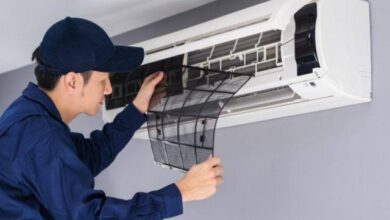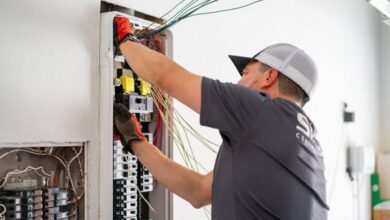How to Improve Indoor Air Quality with Your HVAC System?

Better Air Starts with System Strategy
The Role of Airflow and Ventilation
One of the most essential functions of any HVAC system is maintaining healthy airflow throughout the home. Proper ventilation removes stale air laden with dust, odors, and moisture, while allowing fresh air to circulate evenly throughout each room. Restricted airflow leads to hot and cold spots, making the system work harder while allowing pollutants to linger. Ensuring your ducts are clean and unobstructed helps your HVAC system carry air smoothly, reducing the buildup of particles. Regularly inspecting vents and keeping them open prevents pressure imbalances that compromise circulation. In addition, modern systems often include features such as energy recovery ventilators, which replace indoor air with filtered outdoor air without increasing energy consumption. Even older systems can benefit from minor upgrades or adjustments that improve air exchange. When your HVAC operates with balanced airflow, it acts as the foundation for healthier indoor conditions and supports every other air quality improvement you make.
The Power of Filtration and Routine Maintenance
Filters are the first line of defense against airborne contaminants, capturing dust, pollen, dander, and even some bacteria before they spread. A clogged or low-quality filter allows particles to pass through, reducing air quality and straining the system. Choosing filters with a higher MERV rating can significantly improve indoor air quality without blocking airflow when selected correctly. Changing them every one to three months keeps the system efficient and your air fresher. Beyond filters, regular system maintenance ensures that coils, fans, and motors stay free from dirt that can recirculate into the air. Humidity plays a significant role as well; too much moisture encourages mold growth, while too little leads to dry air that irritates skin and sinuses. Proper maintenance keeps dehumidification and airflow balanced so the air feels clean and comfortable. If there are unusual odors or inconsistent temperatures, scheduling AC repair in Auburn, WA ensures the system functions like a dependable air quality partner, not a hidden source of pollution.
Humidity Control and Why It Matters
Humidity affects more than comfort—it influences what grows and what lingers in your home’s air. When moisture levels exceed 60%, the environment becomes ideal for mold, fungi, and bacteria to thrive in ductwork, walls, and furniture. On the other hand, air that is too dry can cause static electricity, sore throats, and increased viral spread. Your HVAC system is uniquely positioned to regulate these extremes by removing excess moisture in the summer and redistributing warmth more evenly in the winter. Homes with built-in humidifiers or dehumidifiers attached to the system can easily maintain consistent levels. Even if your system doesn’t include one, it can still help manage humidity through correct settings and routine cleaning. Paying attention to condensation on windows or musty smells can indicate that humidity control needs adjustment. When balanced correctly, the system makes your home safer for breathing and less inviting to allergens, ensuring the air feels fresher with every fan cycle.
Upgrading Technology for Cleaner Air
Modern HVAC technology goes beyond heating and cooling—many systems include features designed to remove microscopic particles and eliminate airborne contaminants. UV lights installed inside the air handler can break down mold, bacteria, and even certain viruses as air passes through the system. Electronic air cleaners or media filters provide deeper filtration than standard filters, capturing particles too small to see. Smart thermostats enhance air quality by allowing more frequent circulation cycles or continuous fan operation without wasting energy. These tools work together to create layers of defense against pollutants that may originate from cooking, cleaning products, or outdoor air. Even upgrading ductwork insulation can prevent temperature fluctuations and reduce condensation that might support mold growth. The key is choosing features that match your home’s layout and lifestyle needs. Enhancing the HVAC system with thoughtful technology transforms it from a basic temperature control unit into a powerful air-cleaning system that supports healthier living.
Consistency Through Professional Care and Daily Habits
No system can maintain high air quality without consistent attention. Even the most efficient equipment loses effectiveness if neglected over time. Seasonal checkups ensure the HVAC system continues to operate safely while uncovering hidden issues such as leaks, dirt buildup, or improper airflow. Technicians can measure performance, clean internal components, and calibrate settings to improve circulation and filtration. However, daily habits matter just as much. Keeping floors vacuumed, reducing clutter near vents, and using exhaust fans in kitchens and bathrooms help limit the pollutants entering the system in the first place. Windows should not remain closed for weeks without fresh air exchange unless the HVAC system is running in circulation mode. If pets shed frequently or the home experiences heavy foot traffic, adjusting the filter replacement frequency can help prevent early clogging. A clean system, backed by mindful routines, creates long-term consistency, allowing your HVAC to function as a silent partner in maintaining pure, breathable indoor air every day.
Improving indoor air quality does not require complex renovations or constant worry. It begins with recognizing that the HVAC system already in your home is capable of far more than temperature control. When properly maintained, it removes contaminants, balances humidity, refreshes airflow, and enhances day-to-day comfort. Prioritizing simple steps such as replacing filters, checking vents, and scheduling seasonal maintenance keeps the system efficient and prevents pollutants from circulating. Adding technologies like UV lights or upgraded filtration systems maximizes the system’s ability to capture smaller particles that affect breathing and overall wellness. Small daily actions that support airflow and cleanliness reinforce these efforts over time. A reliable, clean HVAC system becomes the backbone of a healthier home, protecting the air you and your family breathe every hour of the day. By treating your system as a proactive tool for health rather than just a source of heating and cooling, you create an environment that feels fresh, comfortable, and safer year-round.



